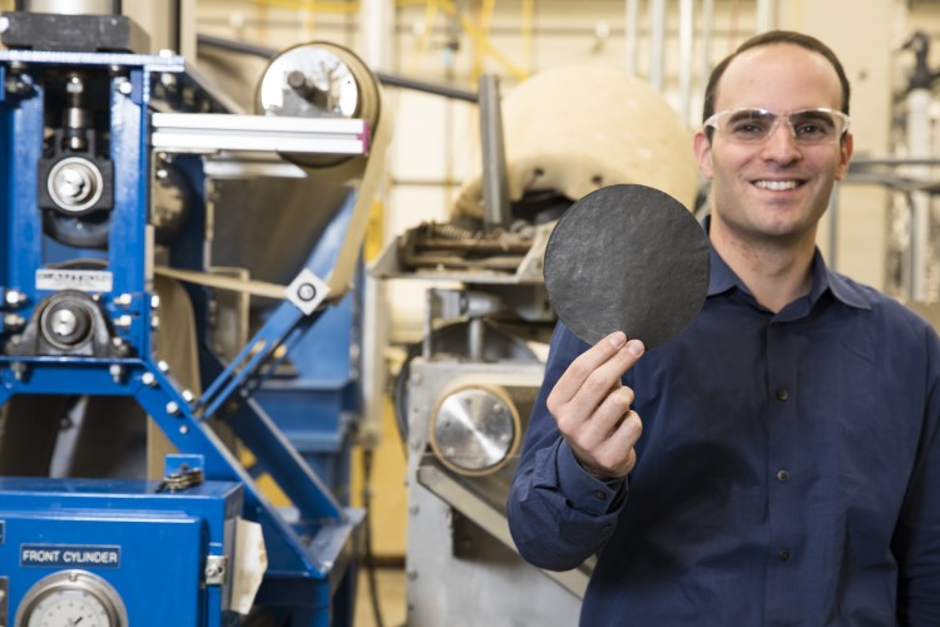
The paper is laced with conductive nanomaterials and can be employed as a switch, turning on an alarm system indicating the absence or presence of water. The researchers described their discovery in a paper published in the Journal of Materials Chemistry A.
“Water sensing is very challenging to do due to the polar nature of water, and what is used now is very expensive and not practical to implement,” said lead author Anthony Dichiara, a UW assistant professor of bioresource science and engineering in the School of Environment and Forest Sciences. “That led to the reason to pursue this work.”
Along with Dichiara, a team of UW undergraduate students in the Bioresource Science and Engineering program successfully embedded nanomaterials in paper that can conduct electricity and sense the presence of water. Starting with pulp, they manipulated the wood fibres and mixed in nanomaterials using a standard process for papermaking.
When water hits the paper, its fibrous cells swell to up to three times their original size. That expansion displaces conductive nanomaterials inside the paper, which in turn disrupts the electrical connections and causes the LED alarm indicator light to turn off. As the paper dries, the conductive network re-forms so the paper can be used multiple times.
The researchers envision an application in which a sheet of conductive paper with a battery could be placed around a pipe or under a complex network of intersecting pipes in a manufacturing plant. If a pipe leaks, the paper would sense the presence of water, then send an electrical signal wirelessly to a central control centre.
In addition, the paper is sensitive enough to detect trace amounts of water in mixtures of various liquids. This ability to distinguish water from other molecules is particularly valuable for the petroleum and biofuel industries, where water is regarded as an impurity.
“I believe that for large-scale applications, this is definitely doable,” Dichiara said. “The price for nanomaterials is going to drop, and we’re already using an established papermaking process. You just add what we developed in the right place and time in the process.”
The nanomaterials added to the paper were engineered in such a way that they can be incorporated during conventional papermaking without having to modify the process. These materials are made of extremely conductive carbon. Nearly any natural material can be burned to make charcoal, and then carbon atoms can be extracted to synthesise the materials. The team has experimented with making nanomaterials from banana peels and tree bark.
They also tried making nanomaterials from wood scraps to show that the entire papermaking process can be completed inexpensively with natural materials.
“Now we have a sustainable process where everything is from pulp and paper, and we can make conductive materials from them,” Dichiara said.
The team next hopes to test the process on an industrial-sized papermaking machine.




Glasgow trial explores AR cues for autonomous road safety
They've ploughed into a few vulnerable road users in the past. Making that less likely will make it spectacularly easy to stop the traffic for...